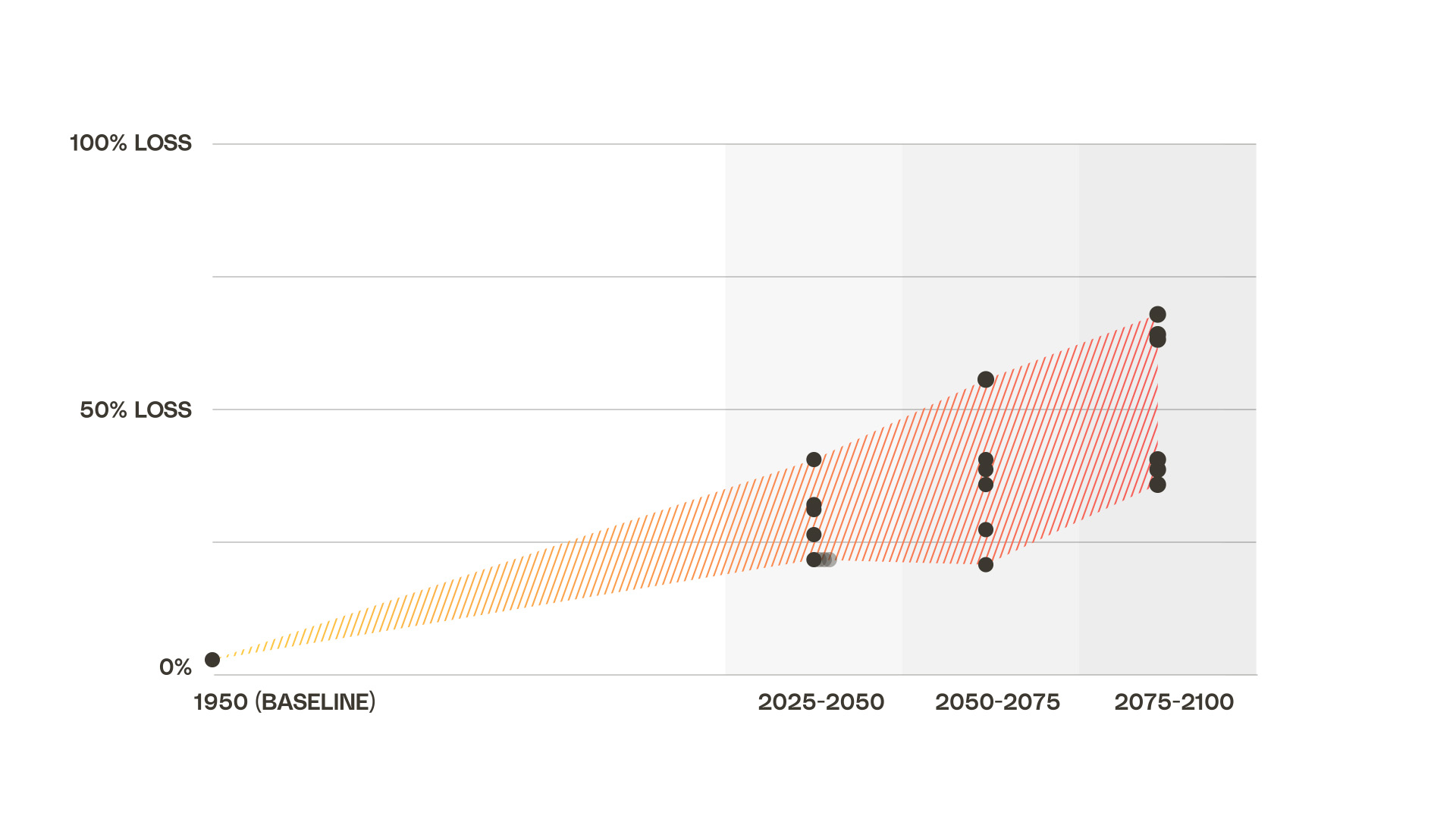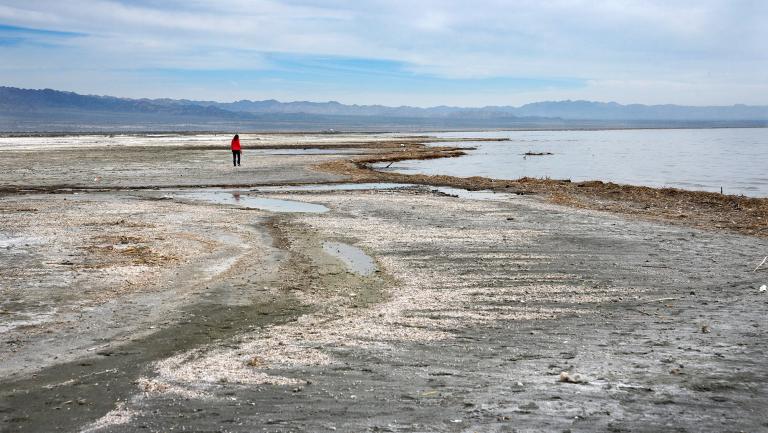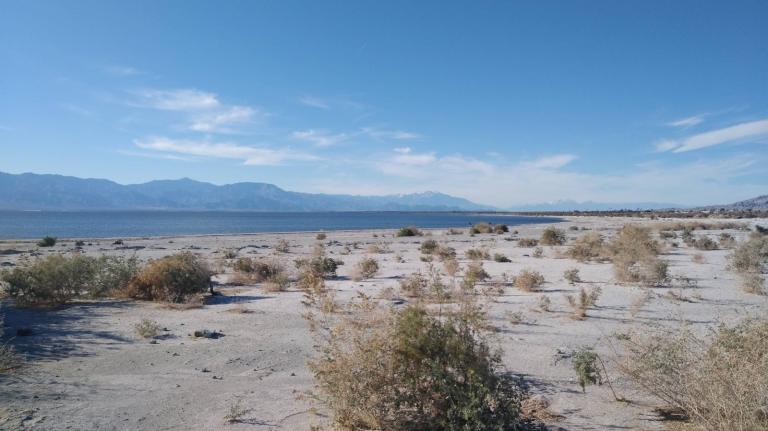This story is part of the Grist series Parched, an in-depth look at how climate change-fueled drought is reshaping communities, economies, and ecosystems.
This transcript has been edited for length and clarity.
Lake Mead is America’s largest reservoir, supplying water for 25 million people across the southwest. It’s also drying up — a kind of poster child for the ongoing drought in the West. But upstream, a much larger but lesser known source of stored water is also disappearing: mountain snow.
This is how climate change is throwing one of the United States’ most critical sources of water out of whack.
During the winter, storms in the Pacific Ocean carry a lot of moisture to the land. If conditions are cold and wet enough, that precipitation falls as snow in the dozens of mountain ranges throughout the West, and stays frozen until the spring. In a typical winter, snowpack across the U.S. West stores over five full Lake Meads’ worth of water. As the weather gets warmer, that snow starts to melt slowly and steadily, feeding rivers, lakes in reservoirs and even recharging aquifers underground.
This system — one that ends up delivering water when we need it, and stores it when we don’t — is so influential that water managers often look to the mountains to predict how much water they’ll have in the summer. When the mountains are bare, that’s bad news for the seasons ahead. Climate change is making that situation more likely, increasing the odds of a lesser-known type of drought called a snow drought.
In 2015, a major snow drought hit the entire West Coast, leading to historic wildfires and water restrictions. California experienced what’s known as a dry snow drought. This is when it’s just too dry to produce any snow, regardless of how cold it gets. These dry conditions were caused by a high-pressure mass of air that some scientists dubbed a “ridiculously resilient ridge.” That winter, the system hovered over the state all season long, blocking ocean storms from making landfall, causing one of the worst snow droughts on record.
To the north, Washington and Oregon also experienced a snow drought, but for an entirely different reason. The Northwest actually received a relatively wet winter, but temperatures were just too warm, so most of that water fell as rain instead of snow. This is called a wet snow drought. And while rainy winters don’t seem like they would lead to drought conditions, all that water ends up rushing right downstream instead of staying on the mountains as snow. By the summer, that means there’s hardly any water left.
Climate change is fueling both wet and dry snow droughts, increasing the odds of ridiculously resilient ridges, and making wet winter storms even warmer — which means more rain and less snow.
Snow droughts happen all around the world and can be especially dangerous in regions that lack water infrastructure, like reservoirs. But snow drought conditions are particularly bad in the Western United States.
It’s hard to say what the future will hold for snow in the West, because mountain snow is really hard to predict. One study tried to tackle this by looking at predictions from 18 different climate models, and found some common themes.

In the near future, the West could lose about a quarter of its historical snowpack. As for the end of the century, that’s where climate models start to diverge, largely depending on how fast we end up taking action on the climate crisis.
The worst projections come under scenarios where emissions keep rising unchecked. But the good news is that many countries are already starting to cut their emissions. And if they can keep that up, regions like the West will have a better chance of avoiding that worst-case drought scenario.
The difference between those extremes represents roughly 15 trillion gallons of water, or the equivalent of 1.5 full Lake Meads.


